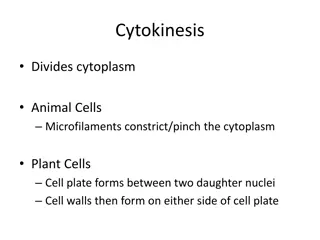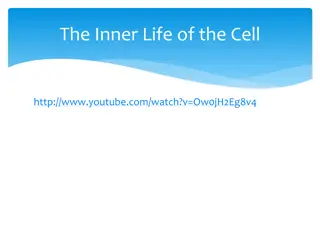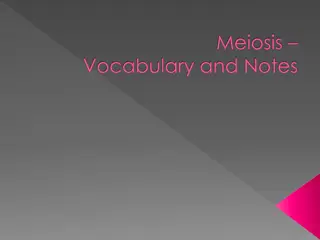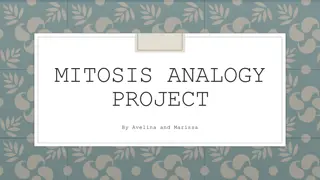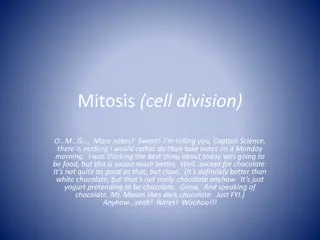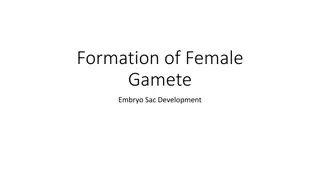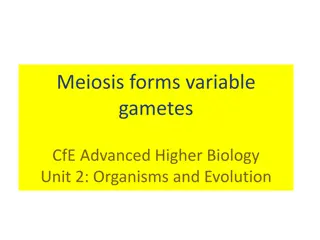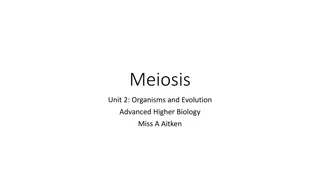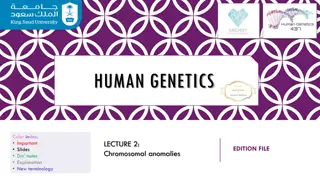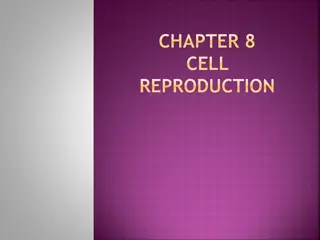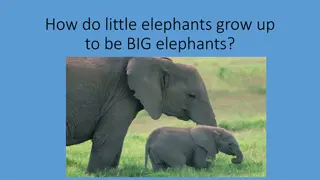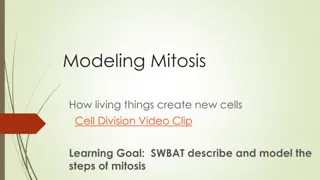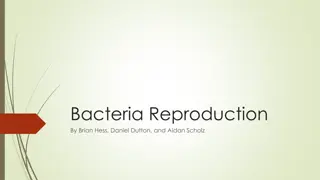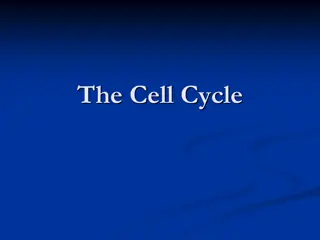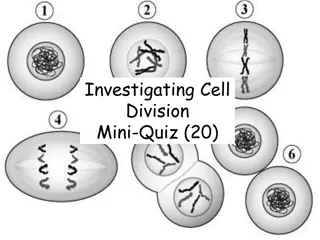Cell Division Processes: Mitosis and Meiosis Explained
Mitosis and meiosis are two types of cell division processes with distinct outcomes in terms of chromosome numbers. Mitosis results in two daughter cells with the same number of chromosomes as the parent cell, while meiosis produces four gamete cells with half the chromosome number. This explanation covers the steps involved in both processes and includes questions about chromosome count, homologous chromosomes, and gamete combinations.
Download Presentation

Please find below an Image/Link to download the presentation.
The content on the website is provided AS IS for your information and personal use only. It may not be sold, licensed, or shared on other websites without obtaining consent from the author. Download presentation by click this link. If you encounter any issues during the download, it is possible that the publisher has removed the file from their server.
E N D
Presentation Transcript
Mitosis Mitosis is a type of cell division that results in two daughter cells, each having the same number and kind of chromosomes as the parent cell. 1. Grab the chromosomes from the parent cell to fill in the other steps in mitosis, including DNA replication, cell division and the resulting two daughter cells. 2. Answer the question below and move to the next slide. How many chromosomes are in the parent cell?
Meiosis Meiosis is a type of cell division that results in four gamete (sex) cells, each having half the number and kind of chromosomes as the parent cell. 1. Grab and place each of the chromosomes from the parent cell onto the other steps in meiosis, including DNA replication and cell division in Miosis I, and a second round of cell division in Meiosis II. 2. Answer the question below and move to the next slide. How many pairs of homologous chromosomes are in the parent cell?
Independent Assortment in Meiosis Meiosis results in gametes, cells that only carry one copy of each chromosome. Pairs of homologous chromosomes get sorted into gametes independently of one another. 1. Grab and place pieces from the magenta circle to show all possible combinations that could result from meiosis in a species with four chromosomes (two pairs of homologous chromosomes). 2. Move to the next slide and answer the activity questions.
Activity Questions A koala somatic cell has a diploid (2n) number of 16. How many chromosomes would be in each gamete (sex cell)? If a cell had a diploid (2n) number of 6, how many possible combinations of gametes could result from meiosis?


